A Swallows’ Tale
In April, we decided put up some nest boxes for Tree Swallows. I downloaded instructions from treeswallows.com, Marc was happy to have a little woodworking project, and we soon had four nest boxes set up. And this was hot real estate: no advertising needed, the swallows found them within hours! What a treat to watch their story unfold.
Tree Swallows are wonderful birds to have around. All day, and especially in the evening, we might see dozens of them swooping in the air, catching bugs. An adult Tree Swallow eats as many as 2000 flying insects EVERY DAY–so in addition to finding them very entertaining to watch, we thought they might help to keep mosquitos at bay. And while they are considered a species of low conservation concern, their numbers have declined about 30% between 1966 and 2019–possibly because of a lack of nesting habitat (tree cavities).
There was much squabbling as the swallows staked out their new accommodations.
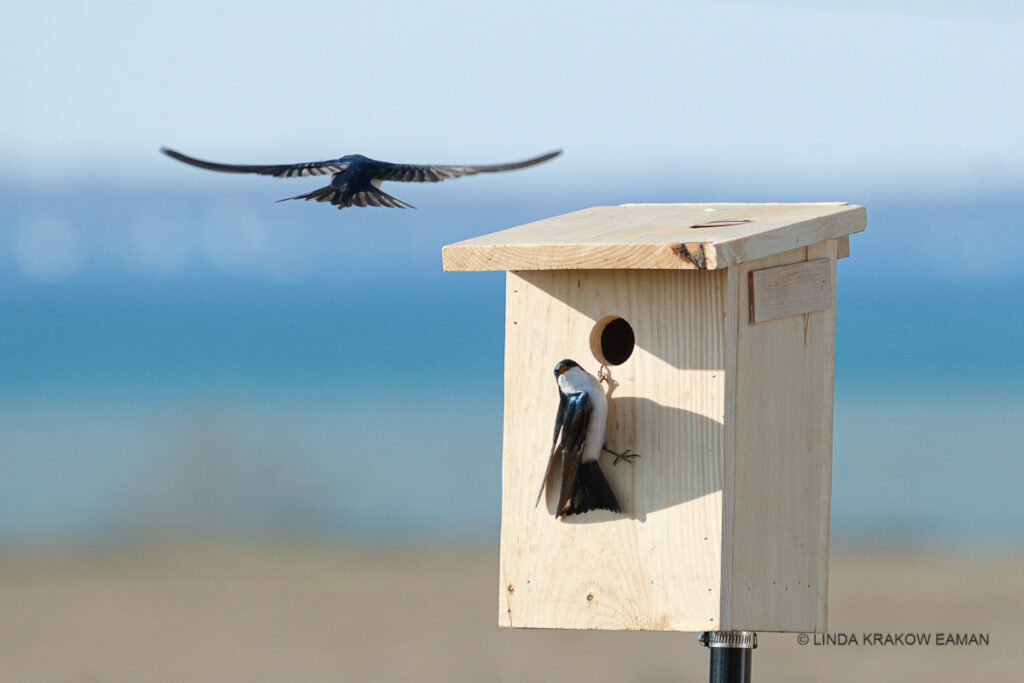
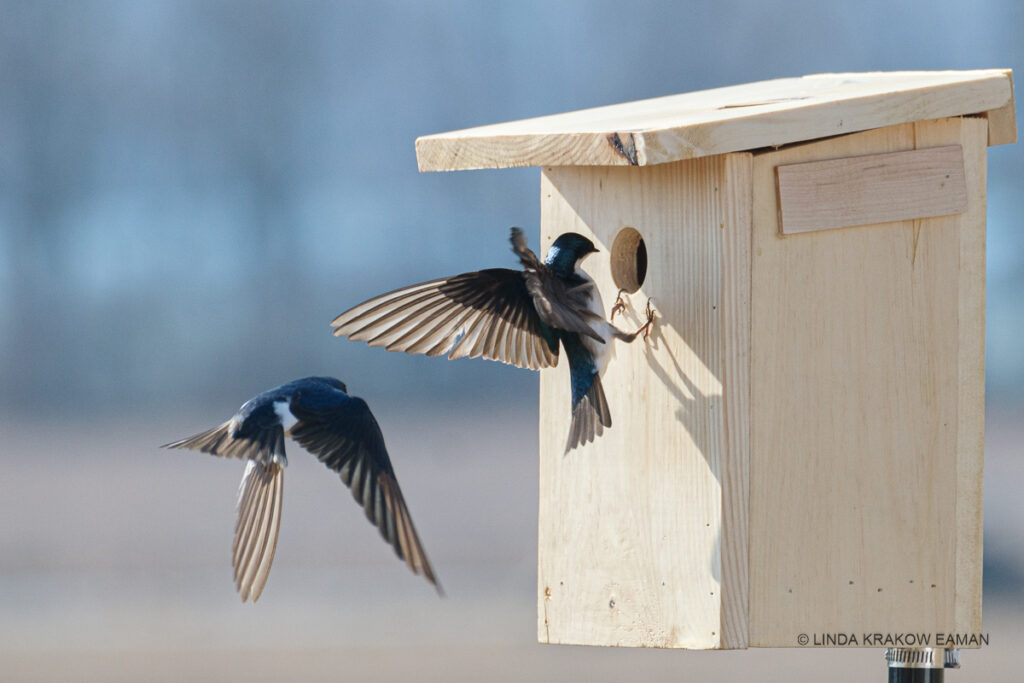
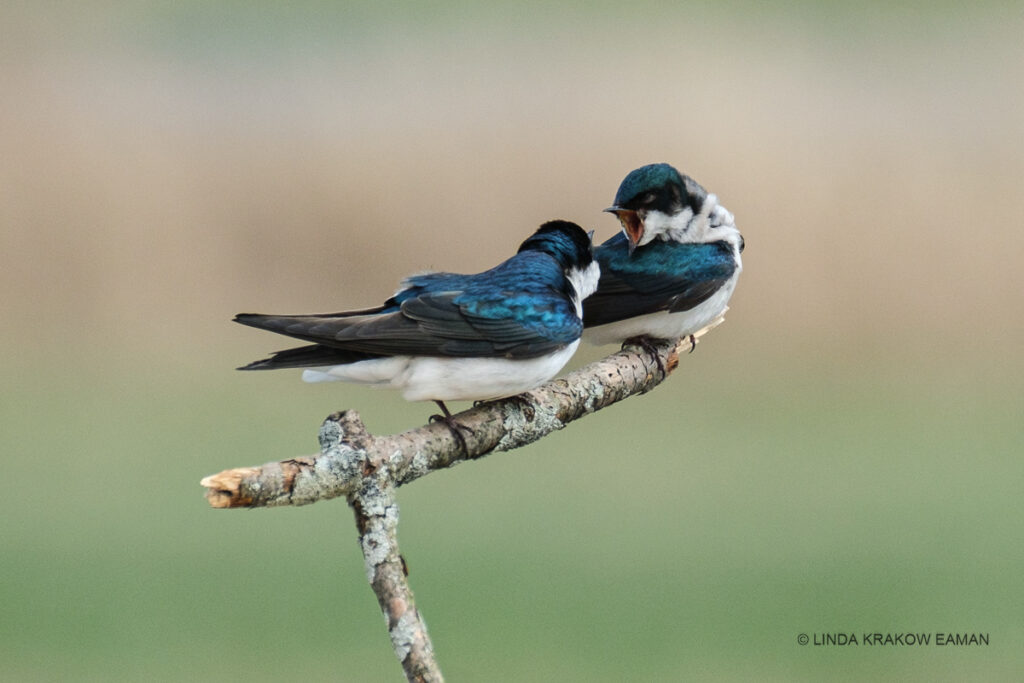
Soon, we could see that a pair had “won” each box.
You might notice I’m not calling them bird houses–because the birds don’t actually live in them. They use the boxes–or the natural versions, such as nests or tree cavities–for laying their eggs and raising their young. Once the young have fledged, they all go out into the wide world and spent their nights roosting in trees, bushes, tall grass, etc.(depending on the species and their habitat).
They started to bring in twigs, to build a nest inside the box.
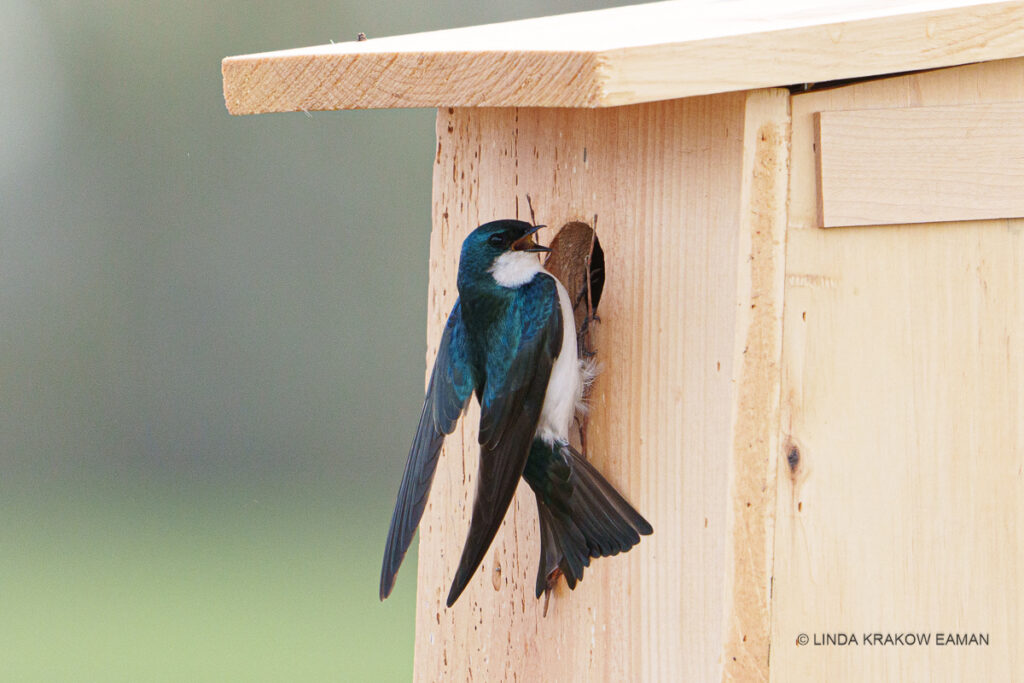
We often saw one inside, and one standing guard.
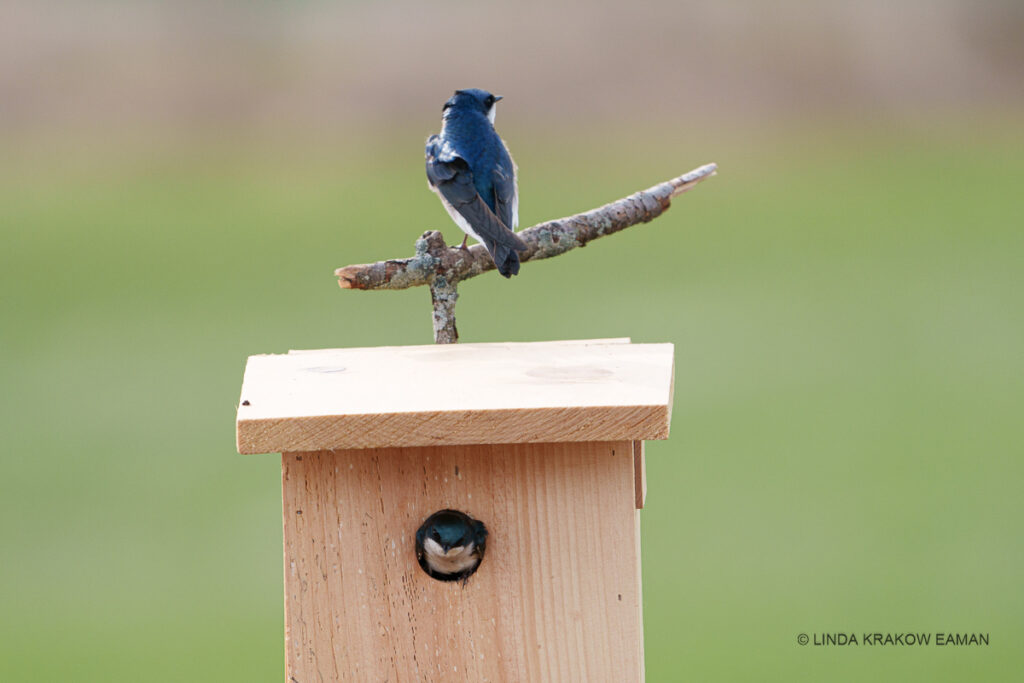
They are such beautiful little birds, with their iridescent blue feathers!
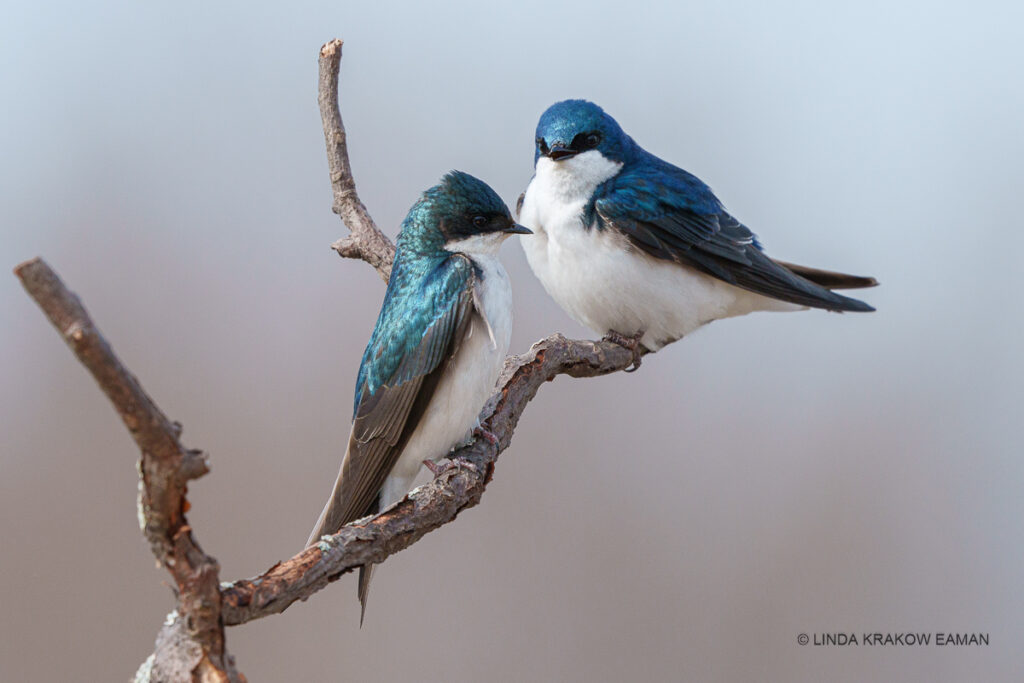
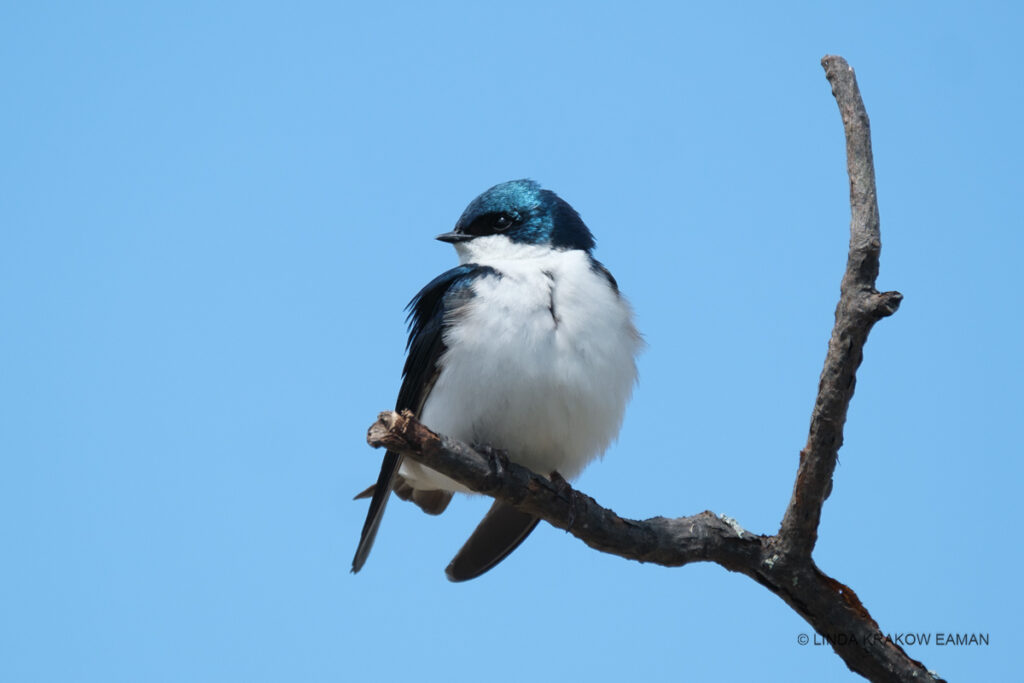
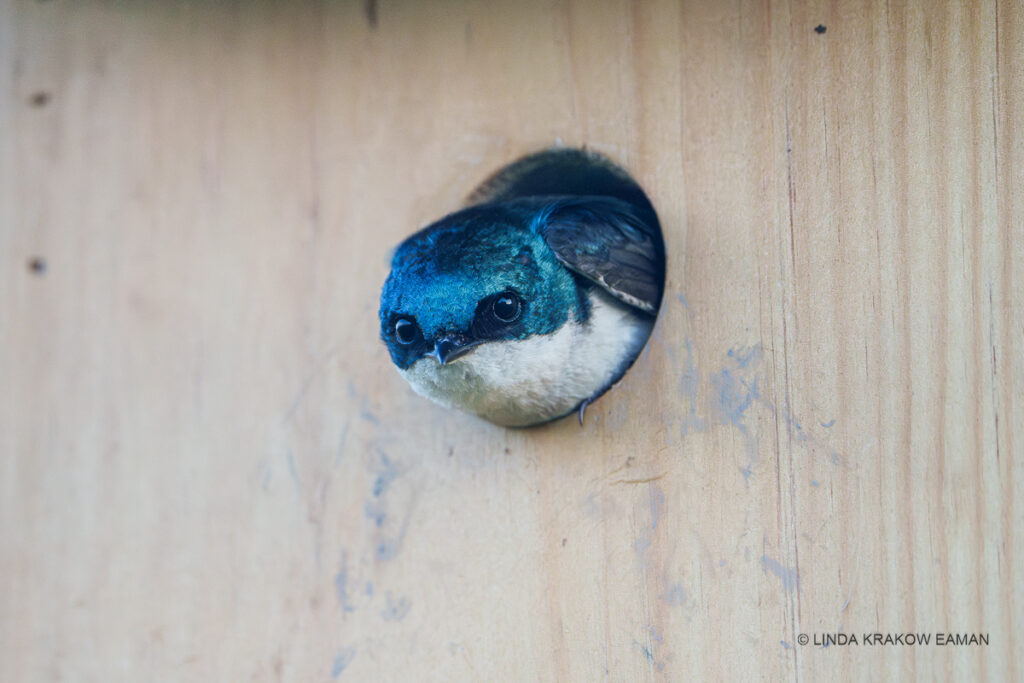
By early June, we could hear lots of cheeping and chirping coming from the boxes, and the parents were constantly going in and out. We eventually saw little ones poking their heads out, waiting for their meals and chirping loudly as a parent neared.
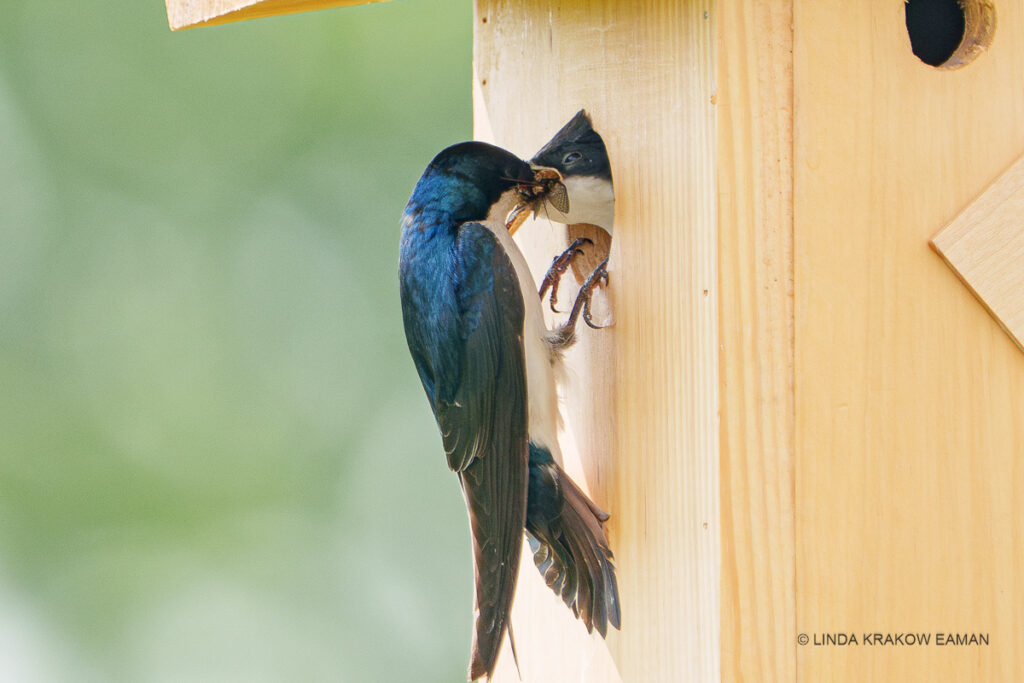
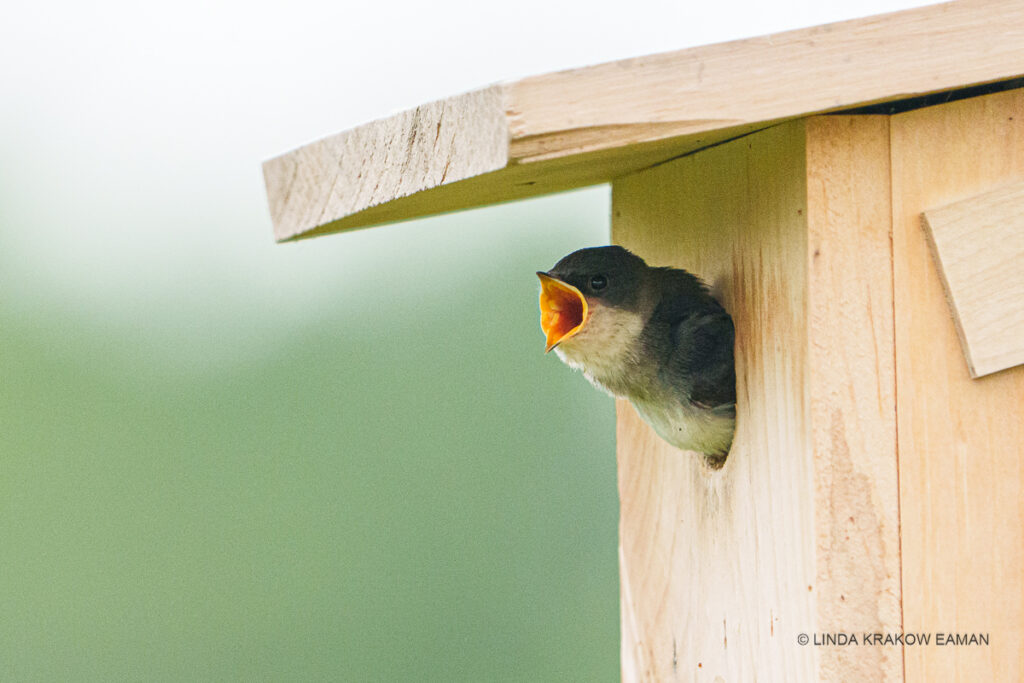
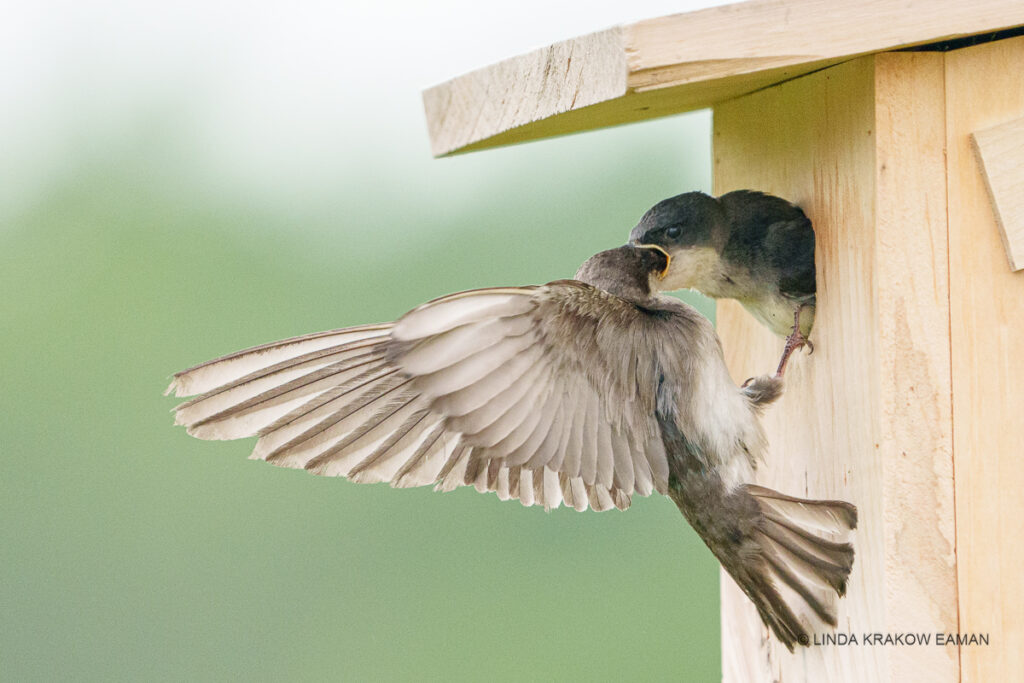
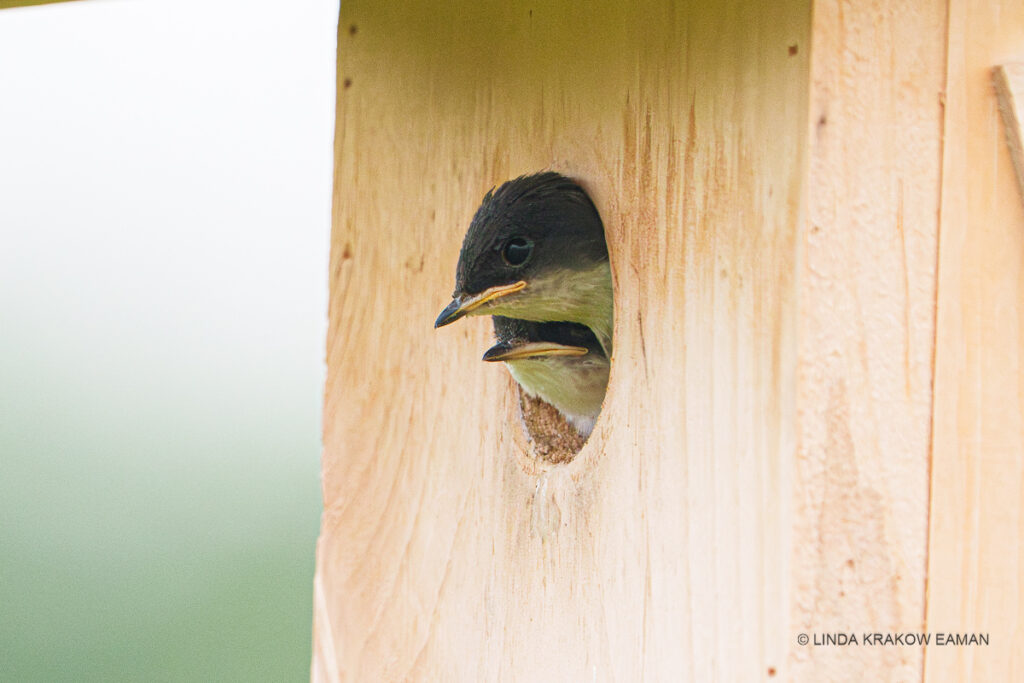
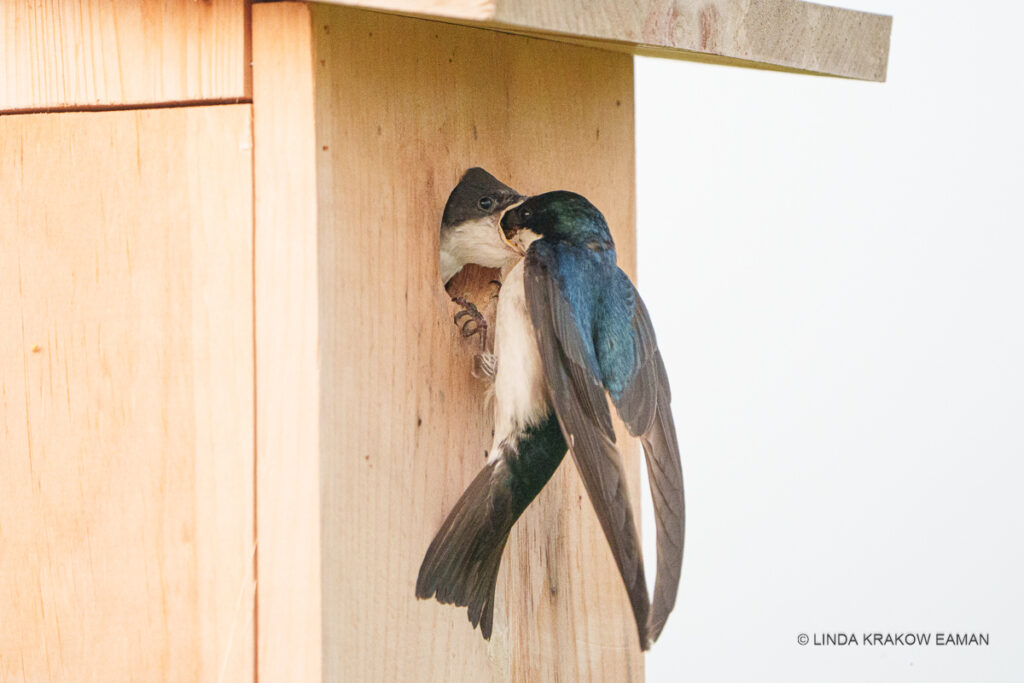
One day we noticed there seemed to be many more birds! The nestlings had fledged! While they still returned to the nests, and the parents were still feeding them, they were flying around on their own, with plenty of sibling squabbles. It looked like a house full of teenagers!
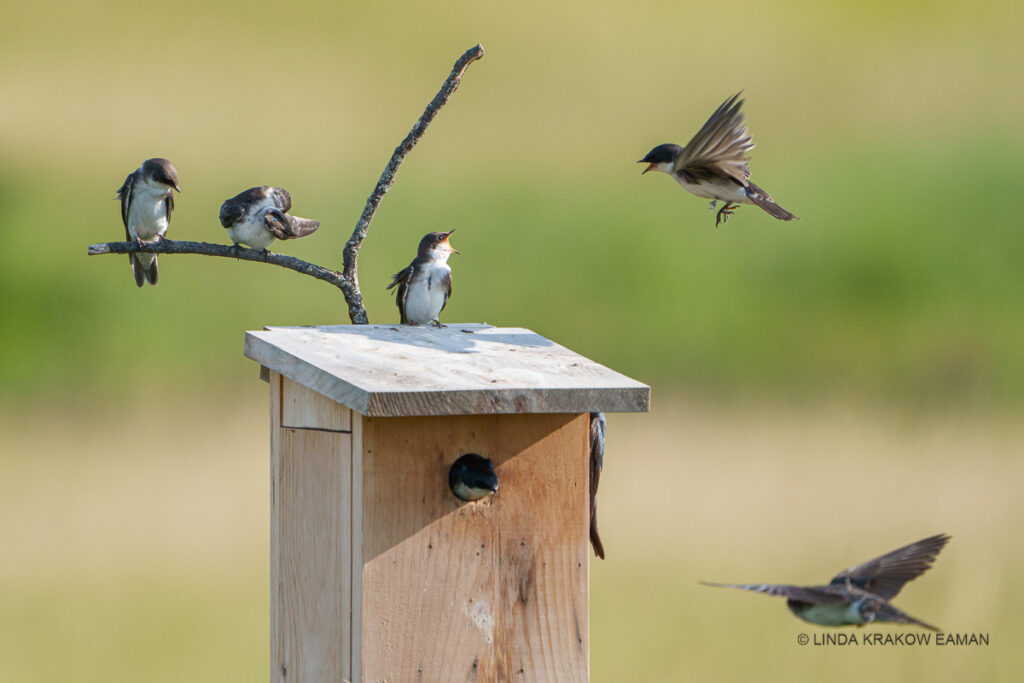
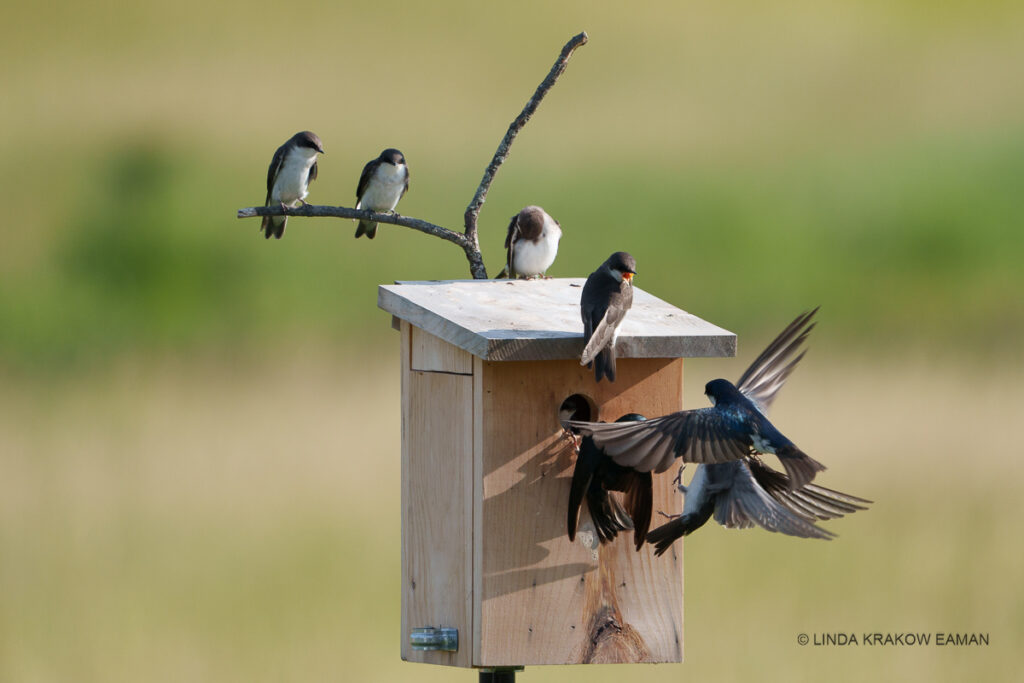
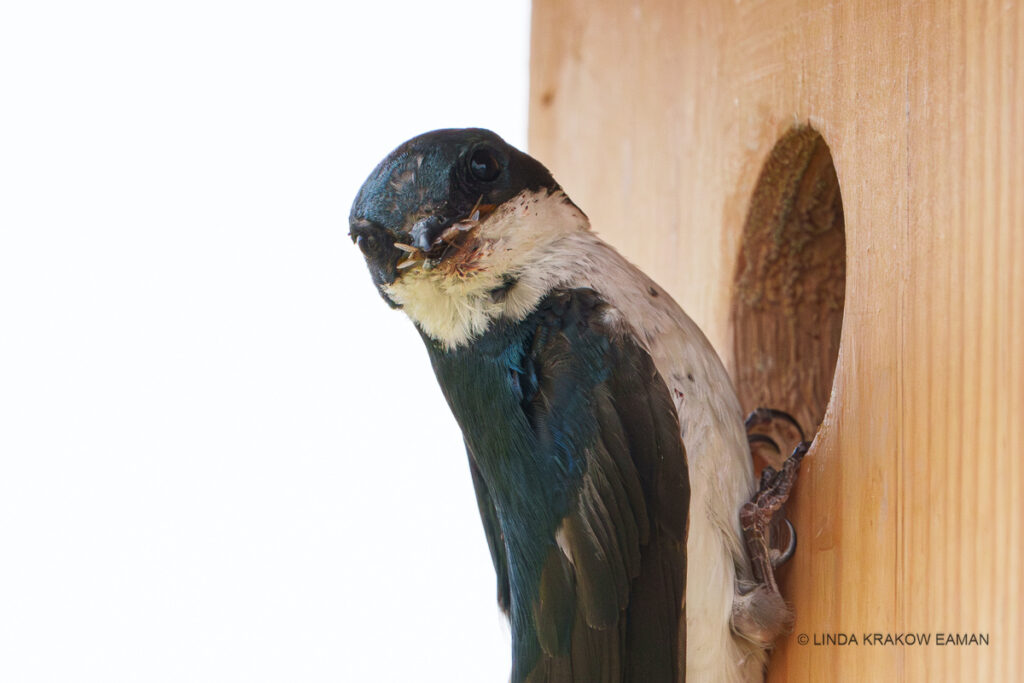
By the end of July, we hardly saw them anymore. I don’t think they had left the area entirely, but not needing the nest boxes anymore they’re probably spending more time close to the water, and roosting in trees.
We’ve cleaned out the nests. I didn’t think to take pictures, but the bottom of each box had a neat layer of twigs with a lining of feathers. We’re thinking about putting up a few more next year, and looking forward to seeing the cycle all over again!
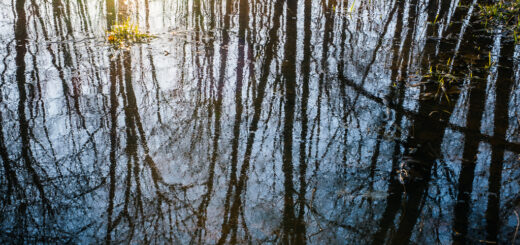
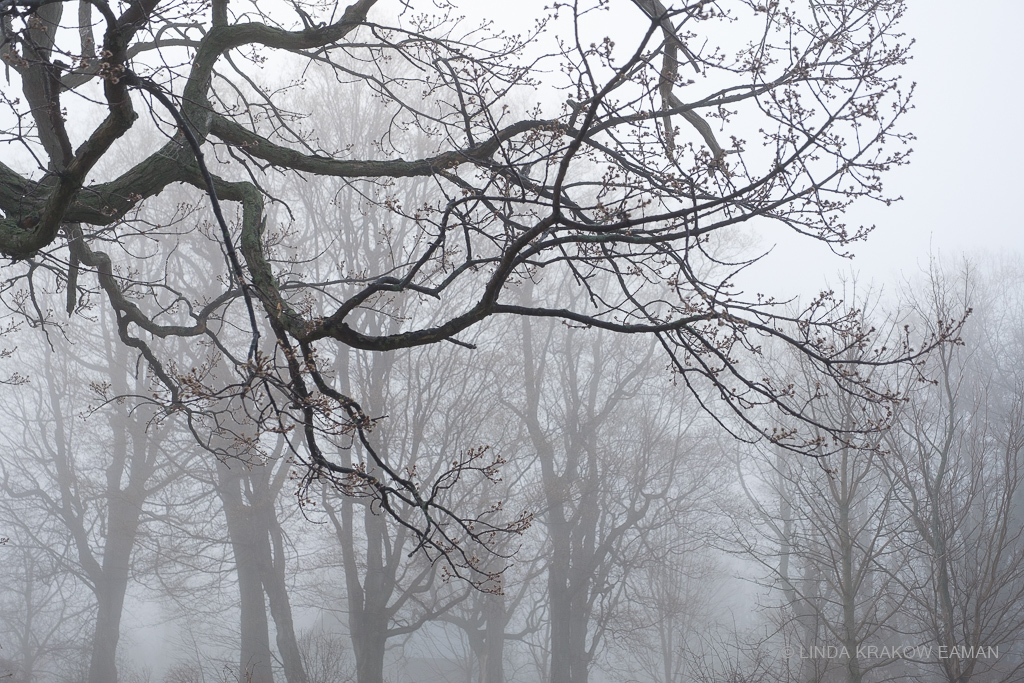
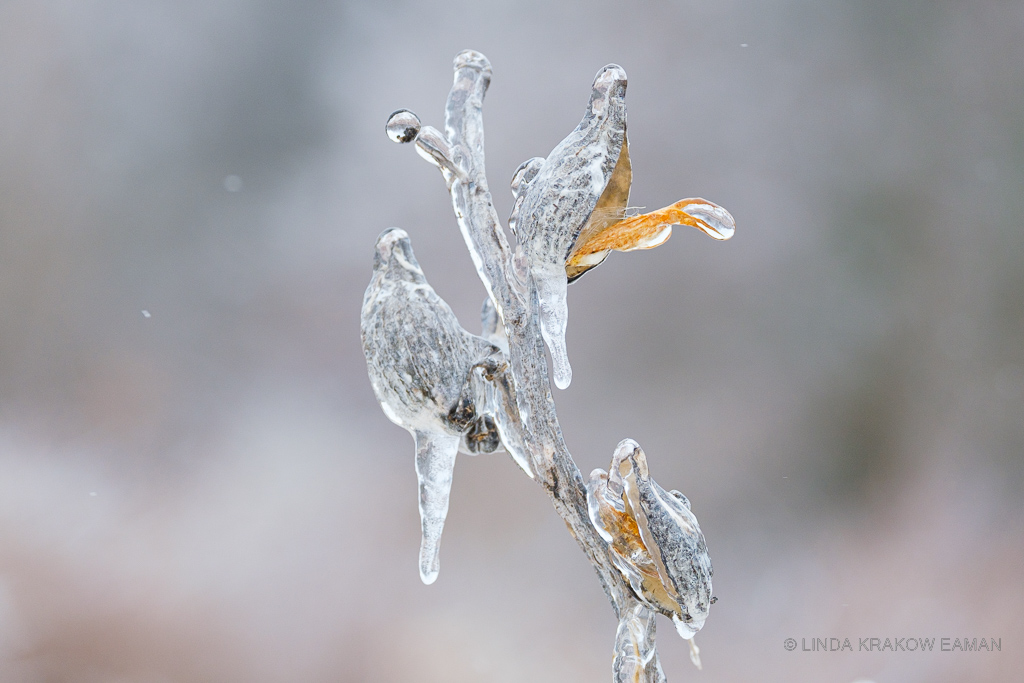
Love this! They are beautiful and must have been so entertaining!
Thanks Shari!
Wolfe Island Tree Swallows need every nest box we can provide, I think. In first year of wind turbines they were the number one species killed according to developer’s report. I suspect the height that they forage puts them at particular risk? Also a Queen’s U study found that rainy springs due to climate change made emergence of aquatic insects unpredictable, reducing no. of second nests and fledgling success (smaller, etc.). They are such fun to have around, though, as your photos show!
It was such an easy project, with such a big reward. We’ll be putting up more, and you’re making me think we should think about helping others on the island to do the same.
We wondered if our swallows had a second clutch as it seemed a long time between the start of nest building and fledging. We didn’t notice any earlier fledging but we might just have missed it.
Wow! This is very cool. What beautiful little birds. Great job on the nesting boxes and the photography of course is amazing.
Thanks Darla!